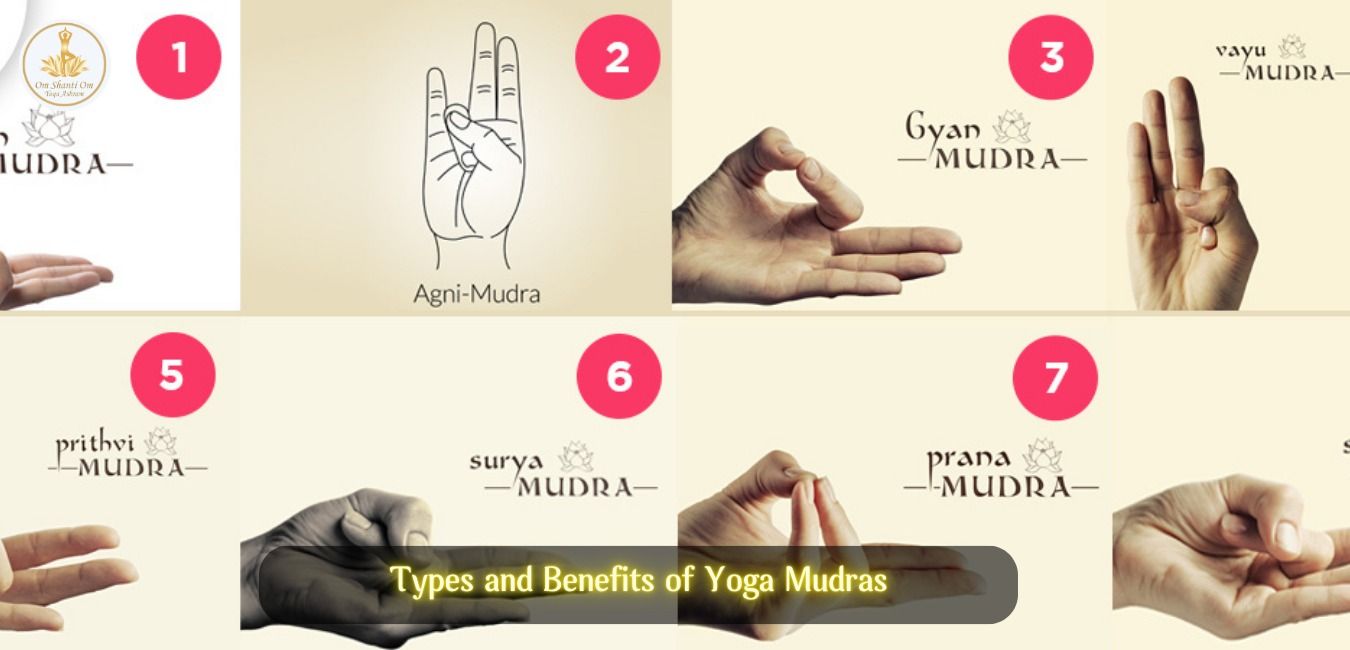Introduction: Understanding the Importance of Mudras
Mudras, often referred to as yogic hand gestures, are powerful tools in the ancient science of yoga and Ayurveda. These subtle yet profound gestures, performed with the fingers and hands, influence the flow of energy within the body and can significantly impact mental, physical, and spiritual well-being. The importance of mudras extends beyond mere physical movement; they serve as a bridge connecting the body, mind, and soul. Whether used during meditation, pranayama (breath control), or daily rituals, mudras can awaken dormant energies, balance the elements within the body, and enhance overall health.

Historical Significance and Spiritual Importance of Mudras
The importance of mudras is deeply rooted in Indian culture, particularly in spiritual and religious practices. Ancient scriptures like the Vedas and Upanishads refer to various mudras used by sages and yogis to elevate their consciousness. In classical dance, rituals, and temple iconography, mudras communicate stories, emotions, and divine truths. Spiritually, mudras are considered sacred expressions that can invoke higher states of awareness. They act as symbolic gestures that resonate with universal energies, making them indispensable in meditative and devotional practices.
Scientific and Energetic Basis of Mudras
From a scientific perspective, the importance of mudras can be explained through the understanding of the body's energy channels, or nadis, and the five elements—earth, water, fire, air, and ether—that exist in the human system. Each finger represents one of these elements, and specific hand positions influence how energy is channeled or blocked. Mudras help harmonize the imbalance of elements and stimulate various parts of the brain through nerve endings in the fingers. This energetic manipulation can lead to increased concentration, emotional balance, and improved immunity.
Health Benefits and Healing Importance of Mudras
One of the most practical reasons behind the importance of mudras is their therapeutic impact on the body. Mudras are often used as complementary treatments in Ayurveda and naturopathy. For instance, Gyan Mudra is known to enhance memory and relieve stress, while Prana Mudra boosts vitality and strengthens the immune system. Regular practice of mudras can aid in managing chronic conditions such as insomnia, hypertension, digestive disorders, and even anxiety. Because they can be practiced anywhere without any equipment, mudras are accessible tools for holistic self-healing.
Role of Mudras in Meditation and Mindfulness
In the realm of meditation, the importance of mudras cannot be overstated. When combined with focused breathing and stillness, mudras can deepen meditation and facilitate inner silence. By directing energy in specific patterns, mudras help anchor the mind, reduce distractions, and promote a meditative state more quickly. For example, Dhyana Mudra, often used by Buddha statues, symbolizes pure concentration and inner clarity. Practitioners find that incorporating mudras into meditation not only enhances focus but also helps connect with their inner self on a more profound level.
Conclusion: Embracing the Importance of Mudras in Daily Life
Recognizing the importance of mudras opens the door to a deeper connection with one’s inner potential. These ancient hand gestures are not just spiritual or ritualistic practices—they are practical tools for daily balance, healing, and transformation. As the world rediscovers the wisdom of yoga and mindfulness, mudras offer a simple yet potent way to restore harmony within. Whether you are a beginner or an advanced practitioner, integrating mudras into your lifestyle can lead to lasting well-being and spiritual growth.